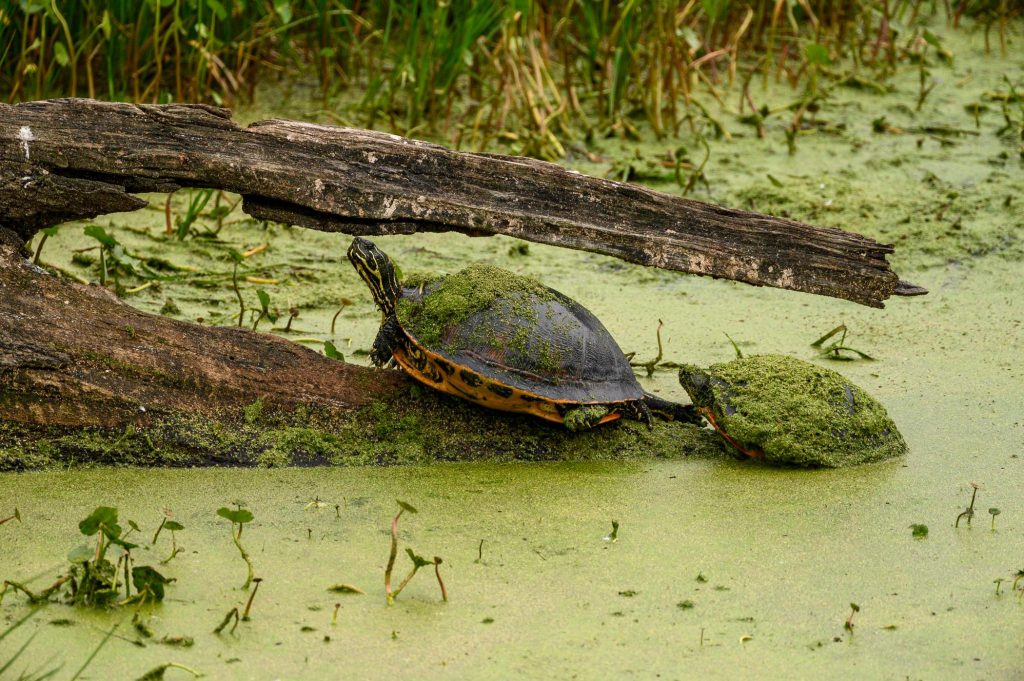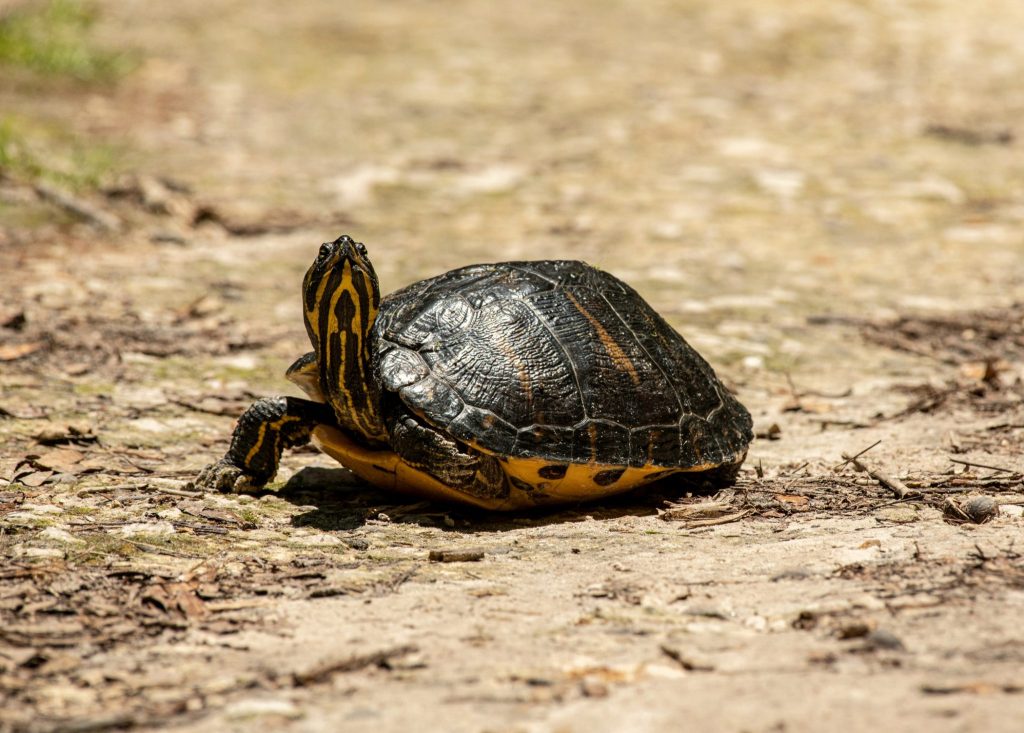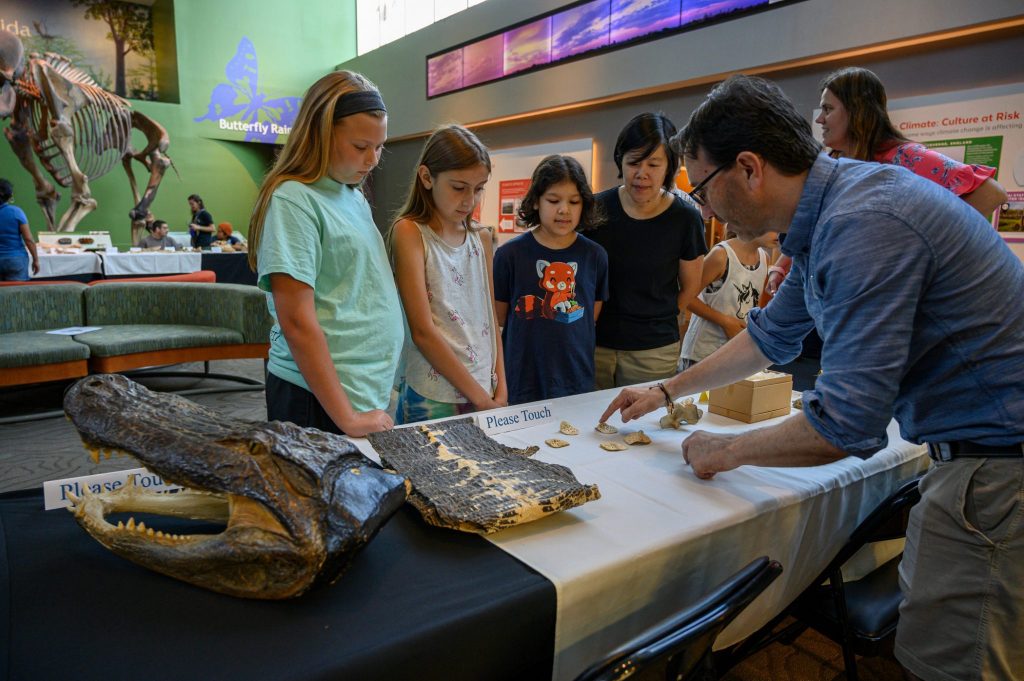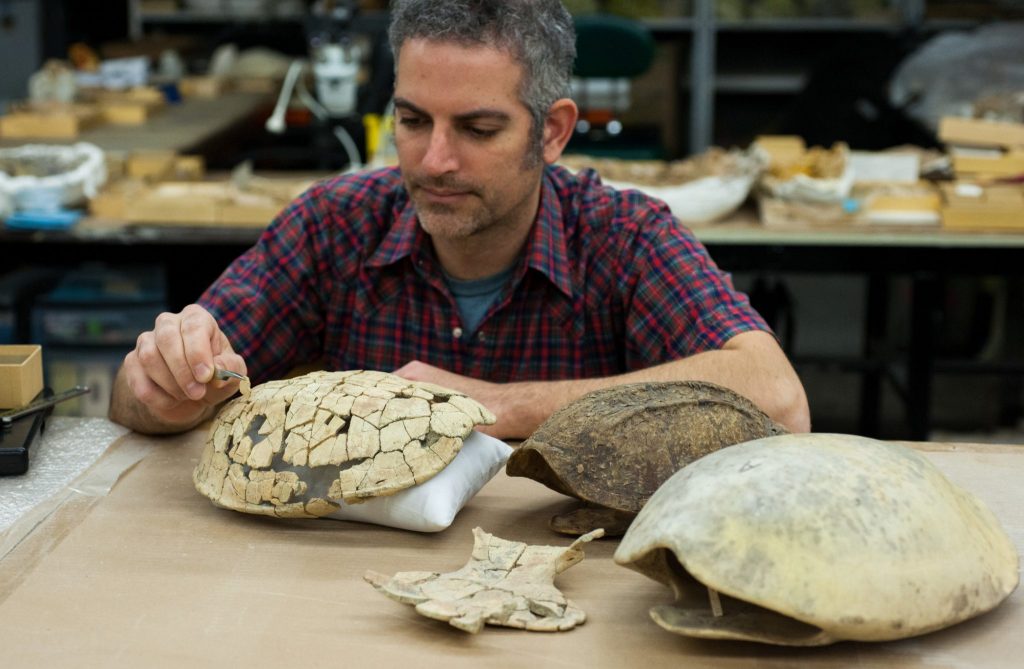Most of the turtle species in Florida are freshwater dwellers. Since our newest permanent exhibit, Water Shapes Florida, takes a deep look at water in our state, we were excited to shine a spotlight on turtles!
Spend some time with our turtle display as you explore. Our exhibits team always collaborates with our scientists when developing new features, but this was a special one for us.

Beautiful Biodiversity
The Southeastern U.S. has an abundance of turtle species, in part because of its many aquatic environments. In fact, only two places in the world – North Central Florida and Southeast Asia – have such high turtle biodiversity. Fossils show turtles have been diverse and abundant in Florida for millions of years.
Comparing the small Common Musk Turtle in the lower right of the case to the big Suwannee Alligator Snapping Turtle in the upper right, you can see that animals flourish in different habitats by changing their size to adapt to their environment.
This new turtle display also allows us to compare modern and fossil specimens of living species like Box Turtles or the Florida Red-Bellied Cooters. By noting the differences and similarities over varying intervals of time, we can understand how changes to their features helped each species thrive.
Looking Ahead
Like many other plants and animals in Florida, turtles are facing an uncertain future. Quite a few freshwater turtle species are listed as imperiled or vulnerable at the state level, and there are rules protecting a number of species. Water quality and land development can profoundly affect their health and populations. Invasive species, introduced diseases and climate change all contribute to pressures on their environments.
Whether you’re walking through our exhibits or kayaking one of the local rivers, look for turtles. They’re faster than you think and more fragile than their shells would lead us to believe.
Turtles on Display
More than 25 years ago, museum scientists and other University of Florida herpetologists wanted to highlight the freshwater turtles of our state. Herpetologist and paleontologist Dick Franz dreamed of interesting ways to share his passion for the humble turtles — both modern and extinct — that often invisibly inhabit our landscape. It’s very gratifying to bring this dream into reality in such a beautiful way.
We knew our newest exhibit would have turtles. Coleman Sheehy, our herpetology collection manager, and Jason Bourque, who studies turtle fossils, helped select specimens from our collections for this display. Our exhibit team was especially focused on showing both the carapace and plastron — the top and bottom of the shells respectively — of multiple species so visitors could observe differences and similarities between species. It was also important to show male and female specimens, since females often grow larger than males.
Along with choosing shells that best showed the colors and textures of these turtles when alive, our exhibits team wanted to balance a striking display design with ideal preservation conditions for these scientific specimens. Julie Waters and Dale Johnson have deep experience in the craft of exhibit storytelling, and with the fabrication support of Mike Adams, they created this delightful carapace cabinet in the Water Shapes Florida exhibit.
Record of Life
These turtle specimens on display in our exhibits are only a small sample of what is in our collections. Scientific collections are a library of life, a record of our natural world carefully preserved so that scientists can continue asking questions and discovering new things well into the future.
As technology expands and refines, researchers have new ways of looking at these specimens. For example, our Digital Lab is scanning preserved specimens which allows for detailed anatomical study without damaging them. We see unexpected surprises sometimes too, like this snapping turtle’s last meal:




